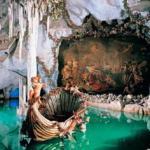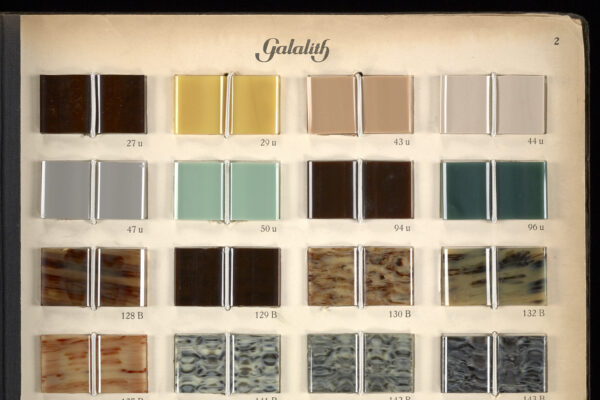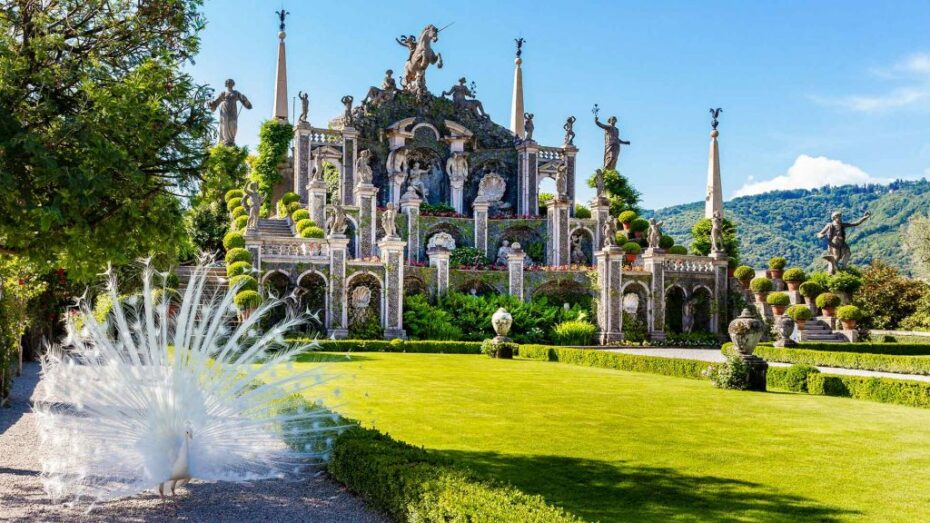
On the serene waters of Lake Maggiore in northern Italy, nestled among the Borromean Islands, lies Isola Bella, a place where history, art, and nature converge. While the island is renowned for its opulent Baroque palace and terraced gardens – including six incredible shell-encrusted grottos – there’s a lesser-known treasure within the walls of Casa Borromeo that offers an enchanting glimpse into a centuries-old tradition: the ‘Teatro delle Marionette’.
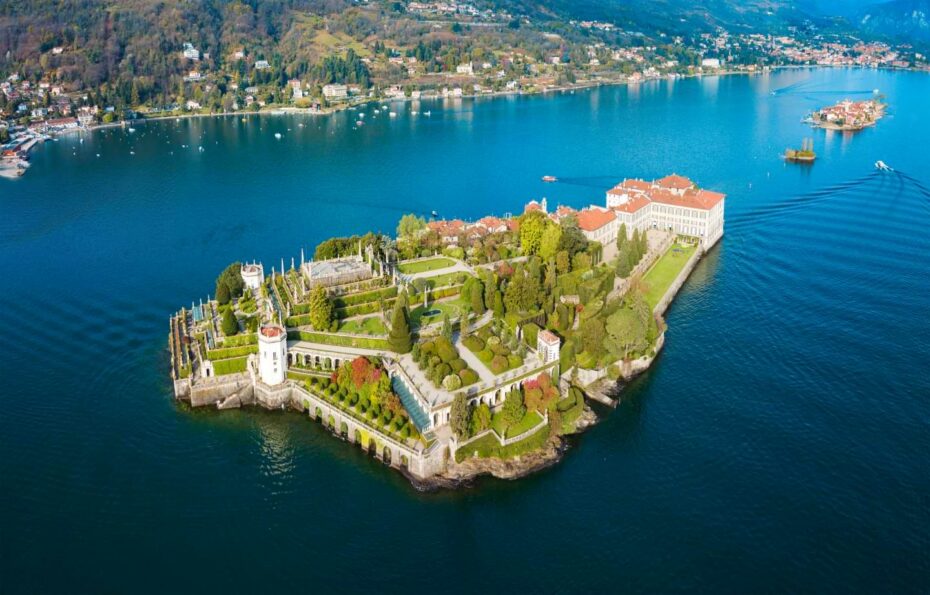
Isola Bella, transformed from a rocky outcrop into a spectacular garden-island by the powerful Borromeo family in the 17th century, is a marvel of artistic vision. The island’s centerpiece, the Palazzo Borromeo, is a grand testament to the family’s wealth and influence, showcasing their passion for art and culture. Amidst the palace’s gilded rooms and art-filled galleries, the Marionette Theatre of Casa Borromeo stands as a charming and intimate reminder of a different kind of artistry — one that captivates through movement, storytelling, and the delicate art of puppetry.
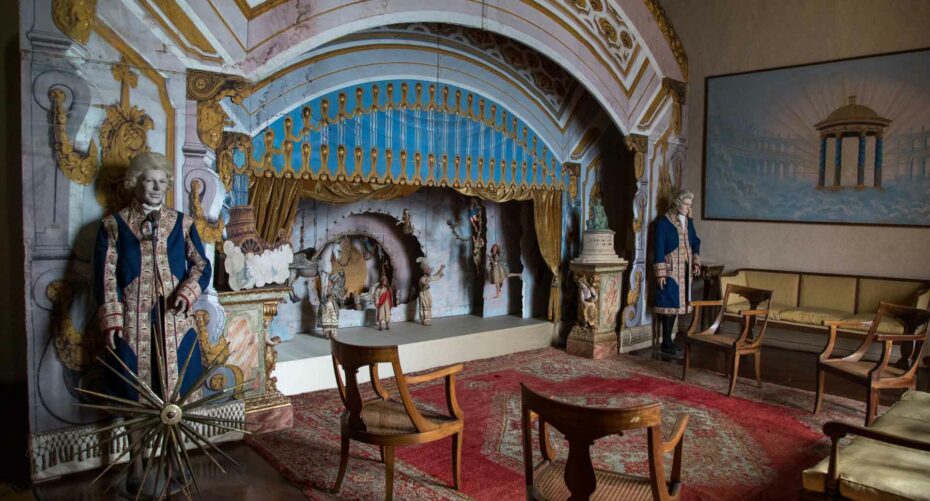
The Marionette Theatre at Casa Borromeo on Isola Bella dates back to the 18th century, when puppet shows were a popular form of entertainment among European aristocracy. The Borromeo family, known for their patronage of the arts, embraced this tradition, commissioning finely crafted marionettes and scripts that reflected both the sophistication and whimsy of their time.
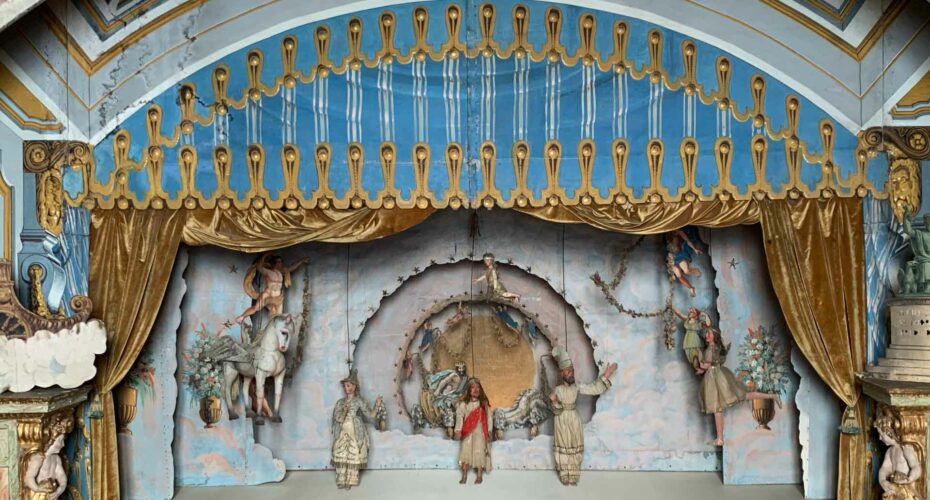
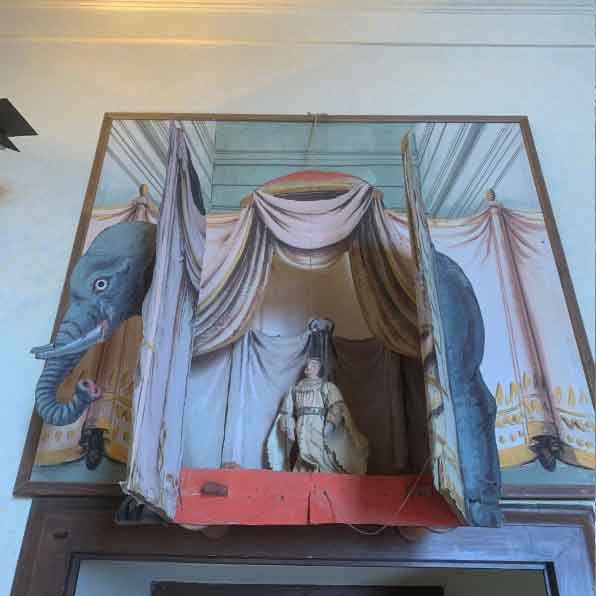
Each marionette is a masterpiece in miniature. Hand-carved from wood and meticulously painted, the figures are adorned with intricate costumes that mirror the fashion of the era. The puppets’ moment of glory arrived in 1828 when King Carlo Felice of Sardinia and his Queen visited the island. In their honor, Vitaliano Borromeo decided to create a dedicated theatre for the little wooden actors.
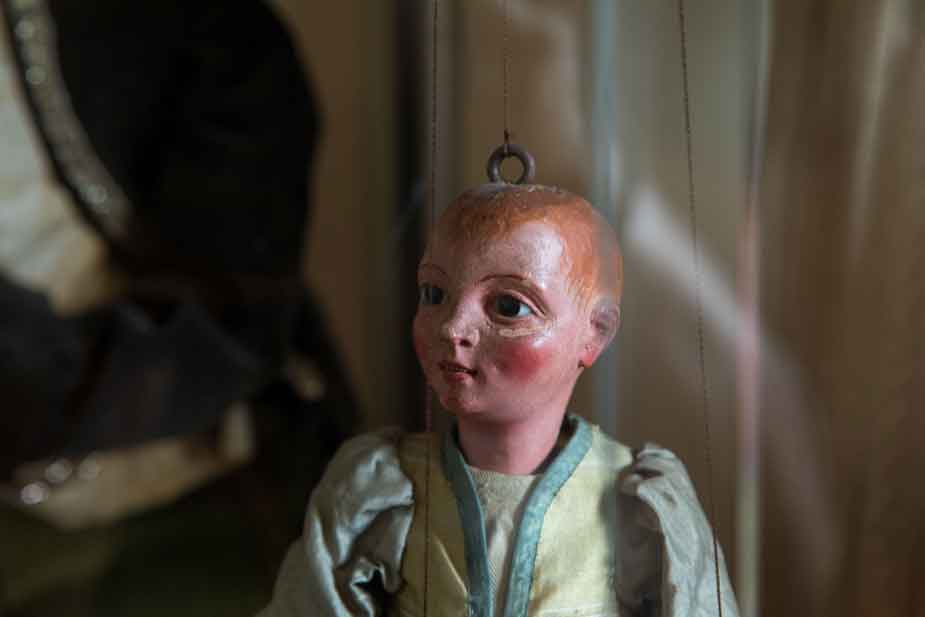
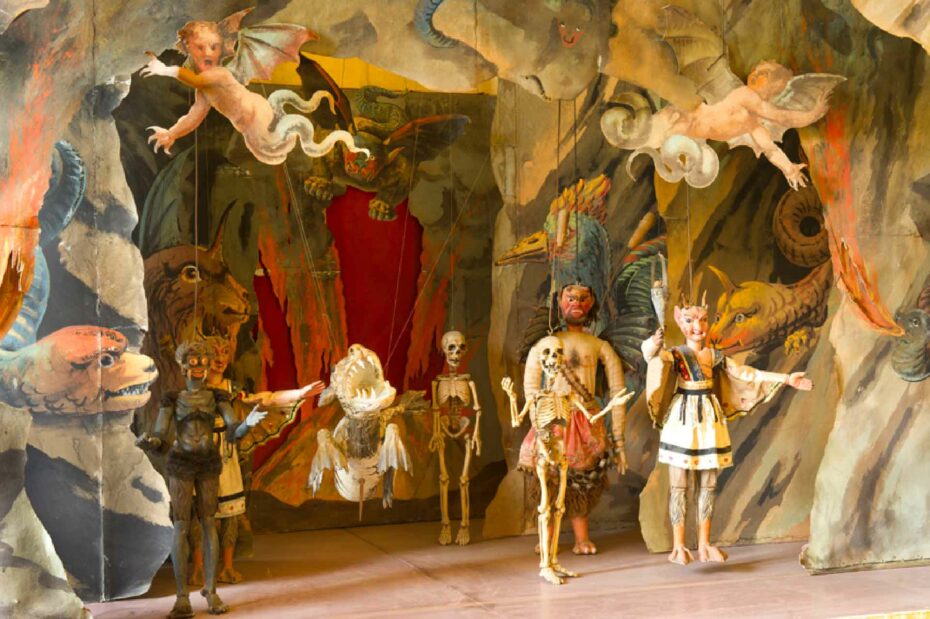
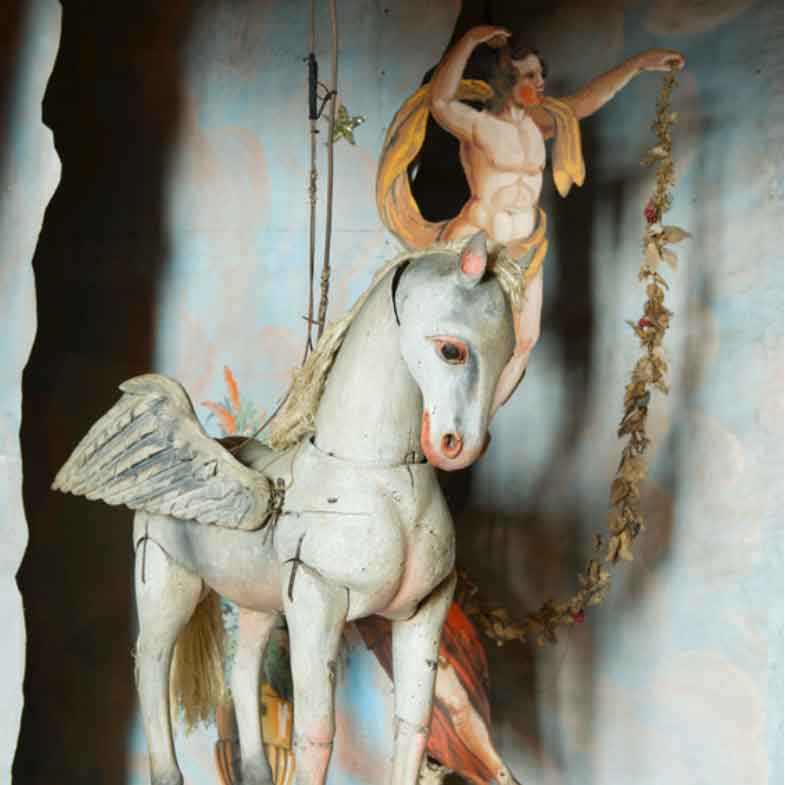
The construction work was overseen by Alessandro Sanquirico (1779-1846), a set designer at Milan’s Teatro alla Scala. He was also responsible for the theatre’s friezes, pediment, and curtain. In the following years, he painted many of the stunning sets that have survived to this day. Sanquirico continued to create scenes and marionettes while enhancing the theatre, which featured 300 seats and 20 boxes, until his retirement. He had a successful career at Teatro Regio and Teatro Carignano in Turin, as well as at Teatro alla Scala in Milan, where he skillfully expressed his Romantic and naturalistic style.
After years of vibrant activity and entertaining distinguished guests, including Count Benso di Cavour, the theatre fell silent in 1857. The early upheavals of the War of Independence took their toll, leading to the theatre’s abandonment and neglect.
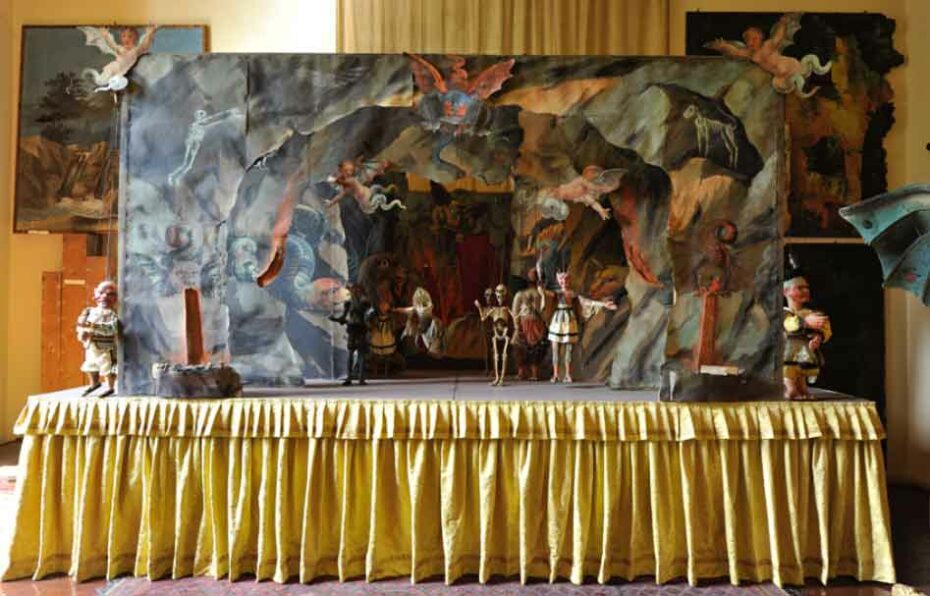
The performances often draw from classical themes, including mythological tales, literary works, and historical narratives, presented with a blend of humor, drama, and elegance. The marionettes, manipulated with extraordinary precision, move gracefully across the stage, their actions synchronized with music and dialogue to create a seamless and captivating performance. Each show is a testament to the timeless appeal of puppetry, a form of storytelling that transcends language and age, resonating with both young and old.
In 1935, the theatre was repurposed to serve as a guardhouse, providing protection for Mussolini and his foreign guests during the International Stresa Conference held at the Palazzo on Isola Bella. The marionette collection however, was always carefully preserved by the family.
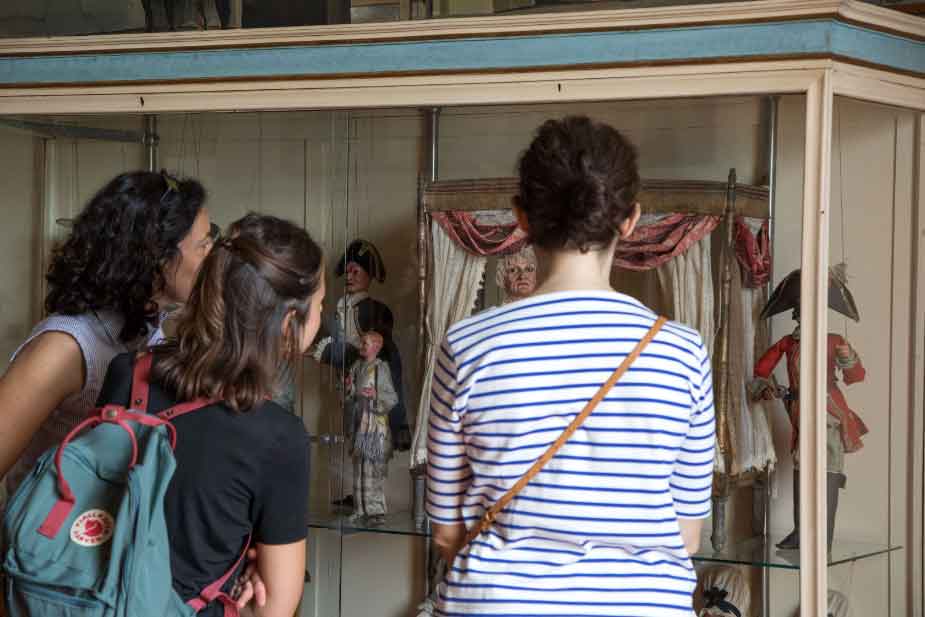
Fast-forward a few generations, and today, you can travel by boat to discover one of the world’s most exquisite collections of its kind, notable for its variety, completeness, and exceptional state of preservation. In today’s fast-paced world, where digital entertainment dominates, the Marionette Theatre on Isola Bella stands as a living testament to the enduring charm of traditional arts. The Borromeo family has continued to preserve this cultural treasure, ensuring that the magic of marionette theatre remains a vital part of Isola Bella’s heritage.
For those exploring Lake Maggiore, a visit to this charming theatre is a must.



